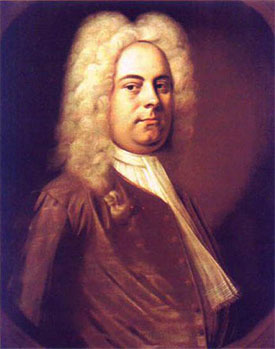by Daniel Hathaway

Robert Porco took a middle path on both accounts on Thursday evening, December 3 at Severance Hall, using a scaled-down orchestra but a fairly hefty chamber chorus of over 50 voices, trimming a few arias and choruses, giving a nod to historical practice with quick tempos and lean textures, but reining in whatever tendencies his soloists might have had to take off on flights of vocal fancy. The performance was respectful, meticulous, and safe.
The overture (“Sinfonia”) provided a hint of what was to come. Its slow section, a French overture, was round and lyrical rather than craggy and rhythmic, the following Allegro quick and light but insubstantial. Also surprisingly gentle was the chorus that opens Part the Second: the rhythms of “Behold the Lamb of God,” usually over-dotted, almost eroded in the direction of triplets.
The Cleveland Orchestra Chamber Chorus, well-prepared as always, sang with unexpected lightness except in climactic passages with trumpets and drums, and its choral style varied widely from the bounciness of “And the glory of the Lord” to the lyrical, almost legato lines of “O thou that tellest good tidings to Zion.” Certain phrases were choppy (“and the government shall be upon His shoulder”), broken up (“He trusted in God that He would deliver Him”) or stylistically out of sync with the words (“Let us break their bonds asunder” needed far more drama than the text received). Some details like the pianissimo beginning of the “Amen” fugue sounded gimmicky.
Four fine singers made up the solo quartet. Soprano Yulia van Doren exuded personality and sang with beguiling clarity and charm. Her bright red dress and gauzy white wrap added to her stage presence, but her fine narrative style in the shepherd recitatives and crisp melismas in “Rejoice greatly” also made her a standout.
Mezzo-soprano Jennifer Johnson Cano sang with a rich tone even across the tricky registers of “O thou that tellest glad tidings to Zion” and made a fine change of affect between the two sections of “He was despised.” Johnson Cano also did a fine job with the alto version of her prophetic aria, “For he is like a refiner’s fire.”
Tenor John Tessier was equally impressive with his affecting performance of his opening recitative and aria, and later with his quasi-fierce rage aria, “Thou shalt break them.”
Timothy Jones, a last-minute replacement for ailing bass-baritone Nathan Berg, deported himself ably in his arias, though the dramatic thrust of the first part of Messiah was derailed by a pause to seat latecomers just before “Thus saith the Lord of Hosts.” It would have been fun to hear him in the longer version of “Why do the nations” (the short ending used on Thursday evening always sounds strange). Toward the end, Jones and principal trumpet Michael Sachs cemented a robust partnership in “The trumpet shall sound.”
Although there were many lovely details during the more than 2½ hour performance, truly exciting moments were few and far between. Perhaps this Messiah received minimal rehearsal time — much of the music seemed to be on autopilot. It needed less piety and more of a sense of theater.
Published on ClevelandClassical.com December 7, 2015.
Click here for a printable copy of this article



